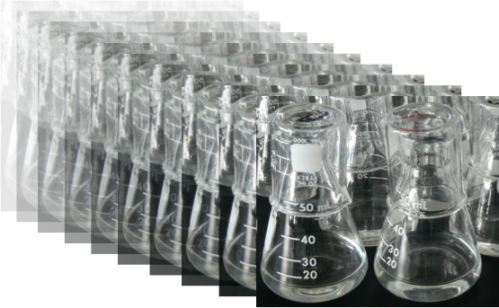"I’m an evolutionary biologist. I write about evolutionary science – past, present, and future – and some of the goings-on in the life of a scientist. (I’m also a professor at Michigan State University, but this blog expresses my opinions only; the posts are not endorsed by my employer or anyone else.)"
Happy birthday, Charles and Abe
Charles Darwin was born into wealth and privilege in England 210 years ago, while across the ocean on the same day Abraham Lincoln was born to a poor family in Kentucky.
Besides the coincidence of their birthdays, there are other interesting connections. Lincoln is known, of course, for preserving the Union and freeing slaves through the Emancipation Proclamation. But Lincoln also signed the law that established the National Academy of Sciences, which provides pro bono scientific advice to the federal government. And while Darwin is known for his work on evolution, he was also a prominent overseas voice in the abolitionist movement. During the voyage of HMS Beagle, Darwin had a heated argument with the captain, Robert FitzRoy, who defended the institution of slavery.
Darwin was onboard the ship as a gentleman naturalist, but the voyage was far from easy. Planned as a 2-year expedition, it was almost 5 years before 27-year-old Darwin returned to England in 1836. He was frequently seasick and, back home, often ill. Nevertheless, his observations, specimens, and notes laid the groundwork for his thinking that culminated with On the Origin of Species in 1859. That book presented Darwin’s evidence for descent with modification (what we now call evolution), and it put forward a mechanism—natural selection—that explains how species acquire traits that fit them to their environments.
Many of us first encounter the idea of evolution as children, when we see pictures or fossils of dinosaurs and other long-ago creatures. But evolution isn’t confined to the past; it continues to occur all around us. Some ongoing evolution causes problems for our health and wellbeing, such as pathogenic microbes evolving resistance to antibiotics. In many cases, though, evolution is used to solve problems in agriculture, biotechnology, and engineering. For example, Frances Arnold won a 2018 Nobel Prize in Chemistry for her work using evolution to generate valuable enzymes with improved and even new functions.
In my lab, we study evolution in action using bacteria, taking advantage of their rapid generations. We can freeze and later revive living cells, allowing us to compare organisms from different generations—in essence, time travel! In an ongoing experiment I started in 1988, we’ve watched 12 populations of E. coli evolve for over 70,000 generations. We can quantify the Darwinian process of adaptation by natural selection, and we’ve sequenced the bacteria’s genomes to understand the coupling between adaptation and genotypic evolution. We’ve even seen the emergence of a new metabolic function that transcends the usual definition of E. coli as a species.
It’s amazing just how much evolution has taken place during a few decades in these small flasks. It leaves me with awe at what evolution has achieved over the last four billion years on our planet … and with wonder about what more will unfold in the fullness of time.

Besides the coincidence of their birthdays, there are other interesting connections. Lincoln is known, of course, for preserving the Union and freeing slaves through the Emancipation Proclamation. But Lincoln also signed the law that established the National Academy of Sciences, which provides pro bono scientific advice to the federal government. And while Darwin is known for his work on evolution, he was also a prominent overseas voice in the abolitionist movement. During the voyage of HMS Beagle, Darwin had a heated argument with the captain, Robert FitzRoy, who defended the institution of slavery.
Darwin was onboard the ship as a gentleman naturalist, but the voyage was far from easy. Planned as a 2-year expedition, it was almost 5 years before 27-year-old Darwin returned to England in 1836. He was frequently seasick and, back home, often ill. Nevertheless, his observations, specimens, and notes laid the groundwork for his thinking that culminated with On the Origin of Species in 1859. That book presented Darwin’s evidence for descent with modification (what we now call evolution), and it put forward a mechanism—natural selection—that explains how species acquire traits that fit them to their environments.
Many of us first encounter the idea of evolution as children, when we see pictures or fossils of dinosaurs and other long-ago creatures. But evolution isn’t confined to the past; it continues to occur all around us. Some ongoing evolution causes problems for our health and wellbeing, such as pathogenic microbes evolving resistance to antibiotics. In many cases, though, evolution is used to solve problems in agriculture, biotechnology, and engineering. For example, Frances Arnold won a 2018 Nobel Prize in Chemistry for her work using evolution to generate valuable enzymes with improved and even new functions.
In my lab, we study evolution in action using bacteria, taking advantage of their rapid generations. We can freeze and later revive living cells, allowing us to compare organisms from different generations—in essence, time travel! In an ongoing experiment I started in 1988, we’ve watched 12 populations of E. coli evolve for over 70,000 generations. We can quantify the Darwinian process of adaptation by natural selection, and we’ve sequenced the bacteria’s genomes to understand the coupling between adaptation and genotypic evolution. We’ve even seen the emergence of a new metabolic function that transcends the usual definition of E. coli as a species.
It’s amazing just how much evolution has taken place during a few decades in these small flasks. It leaves me with awe at what evolution has achieved over the last four billion years on our planet … and with wonder about what more will unfold in the fullness of time.

This post was written for the National Academy of Sciences Facebook page, where it also appears.
No comments:
Post a Comment
Note: Only a member of this blog may post a comment.